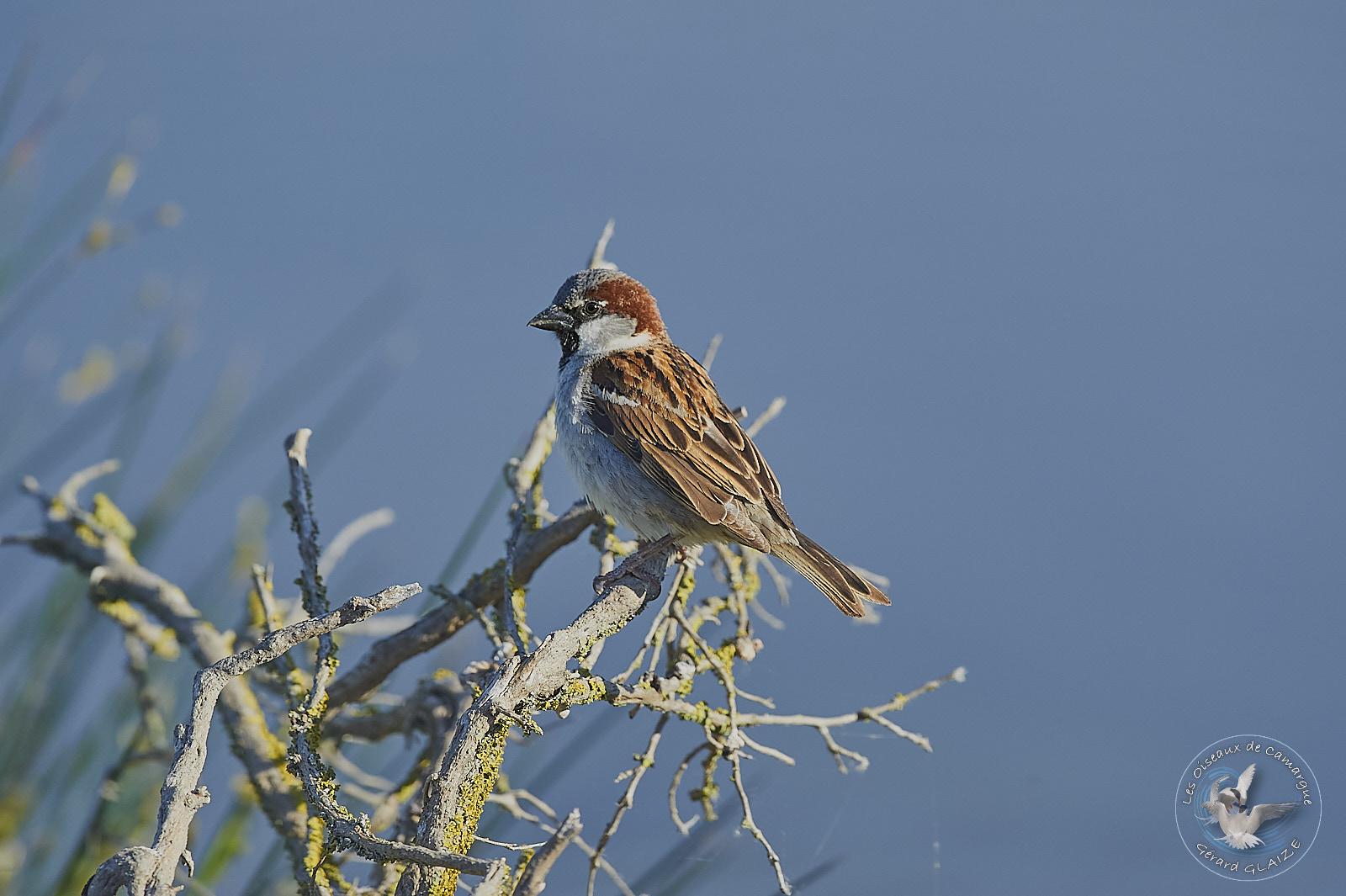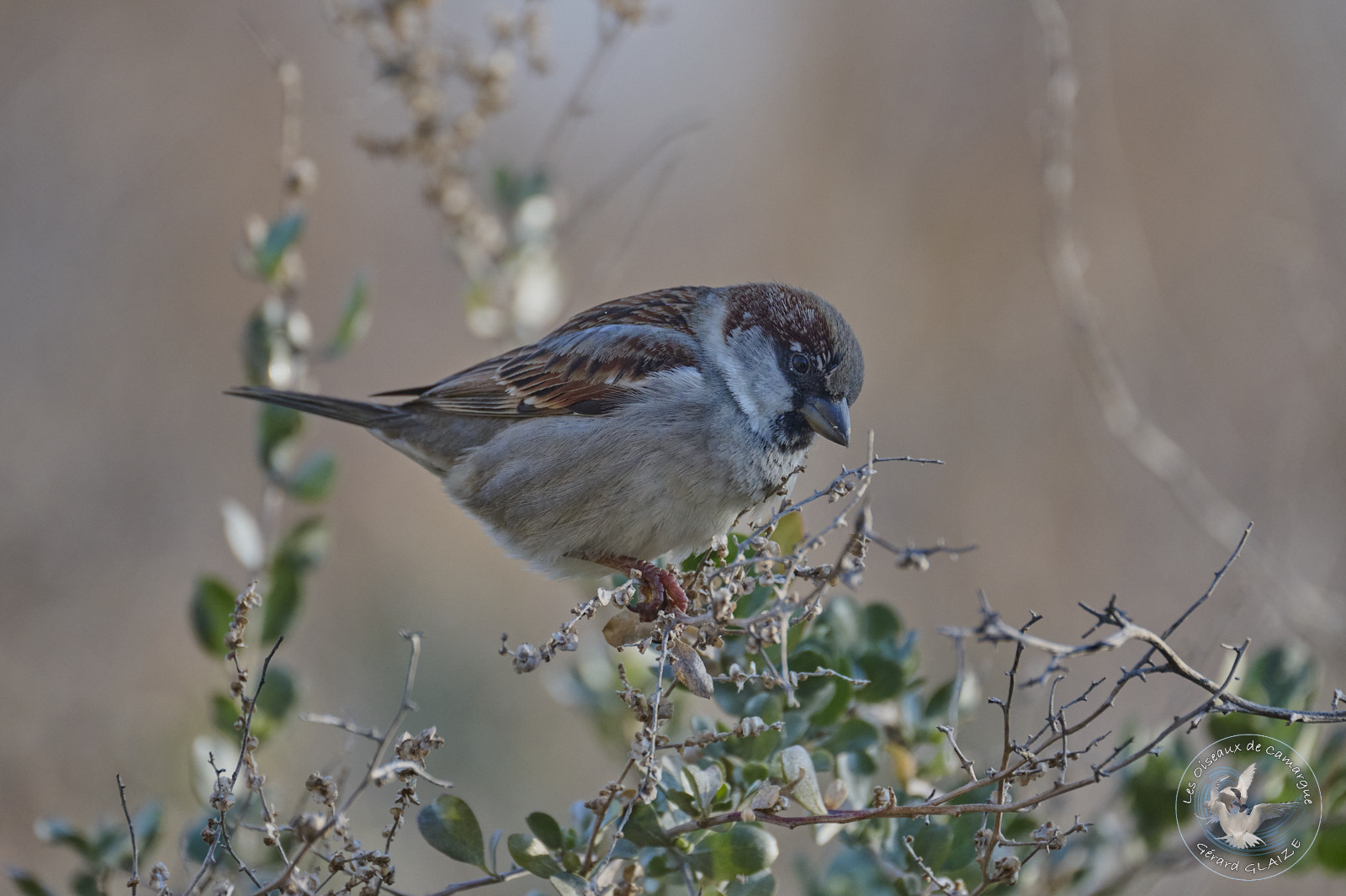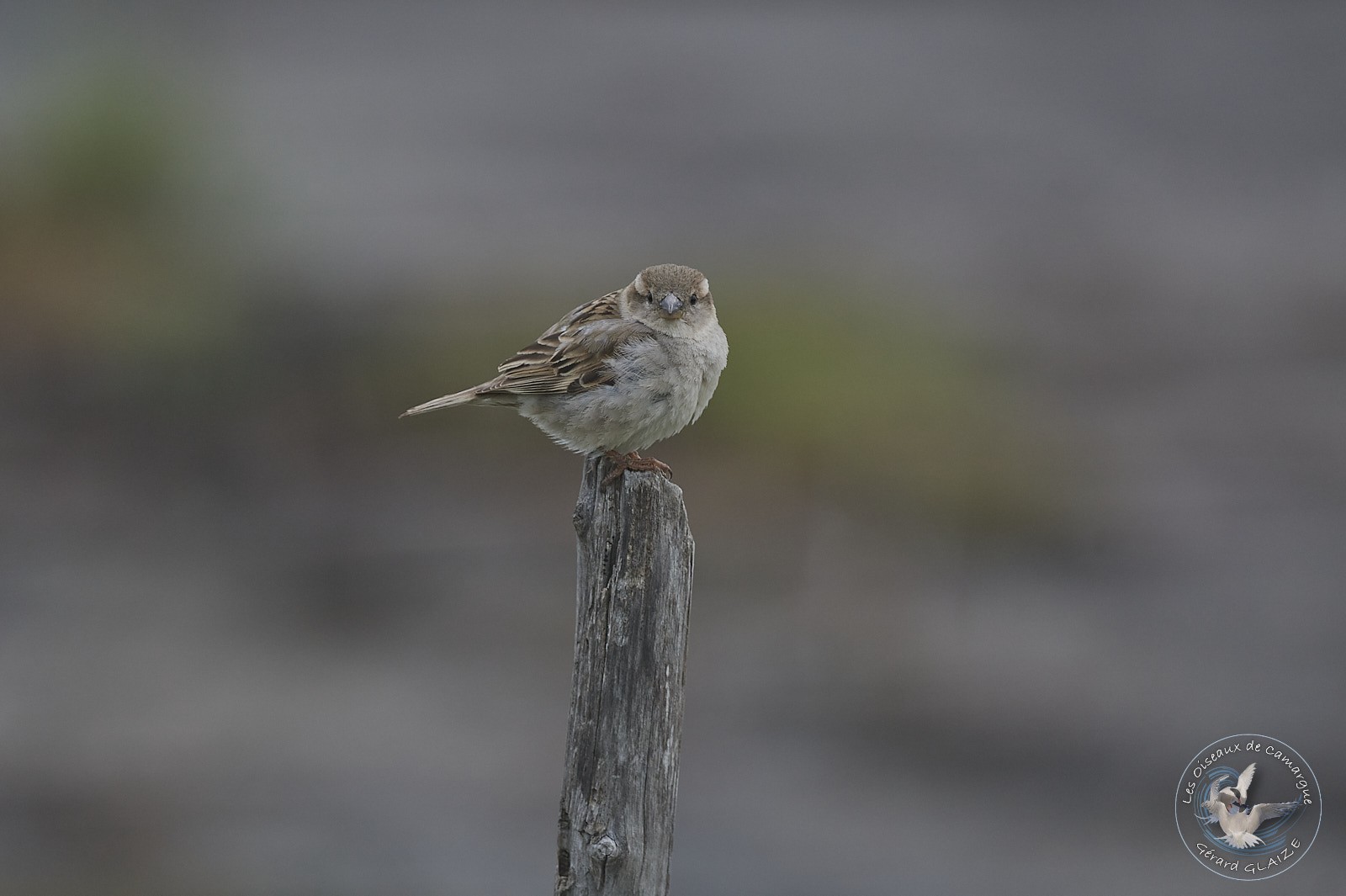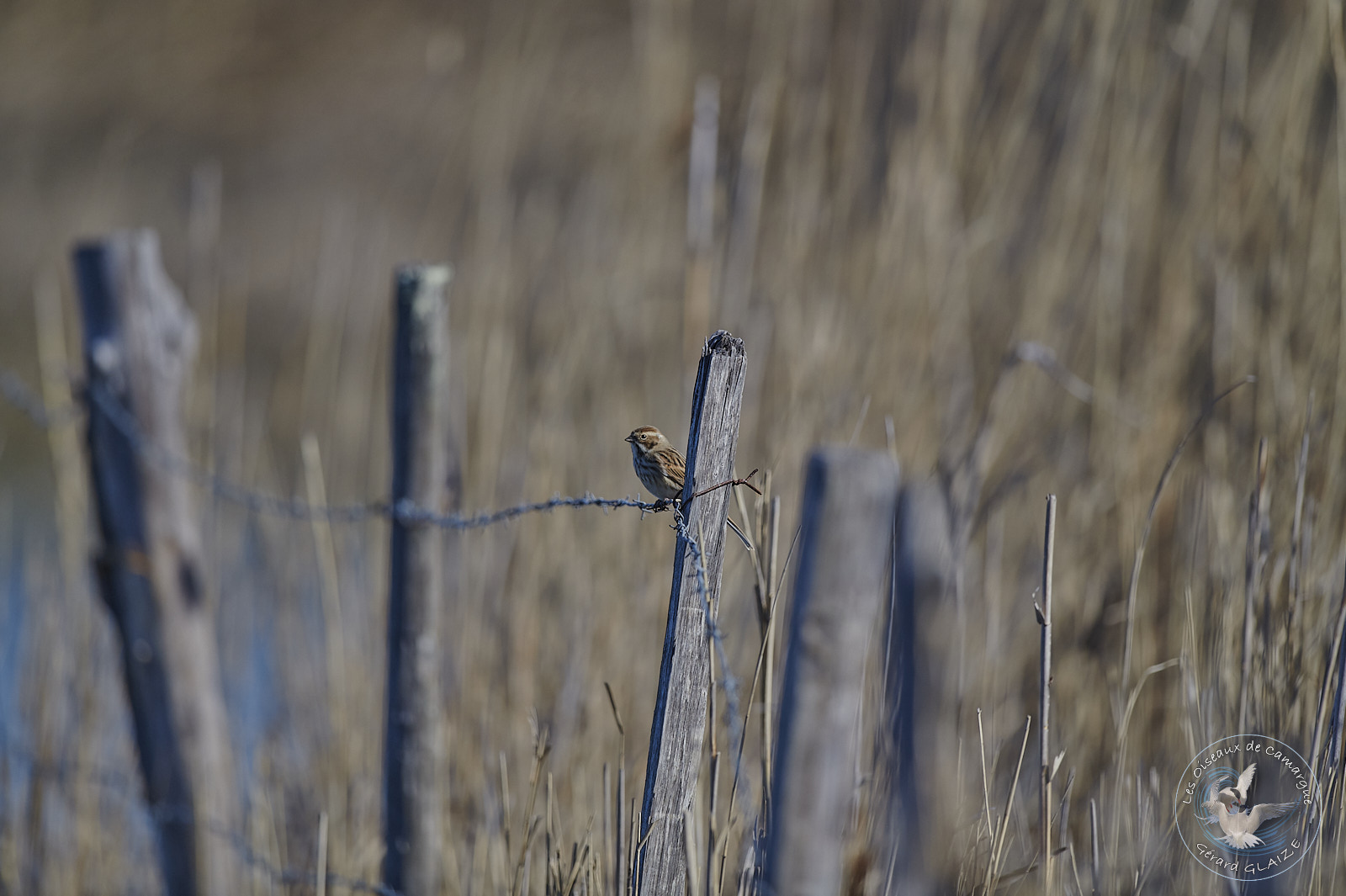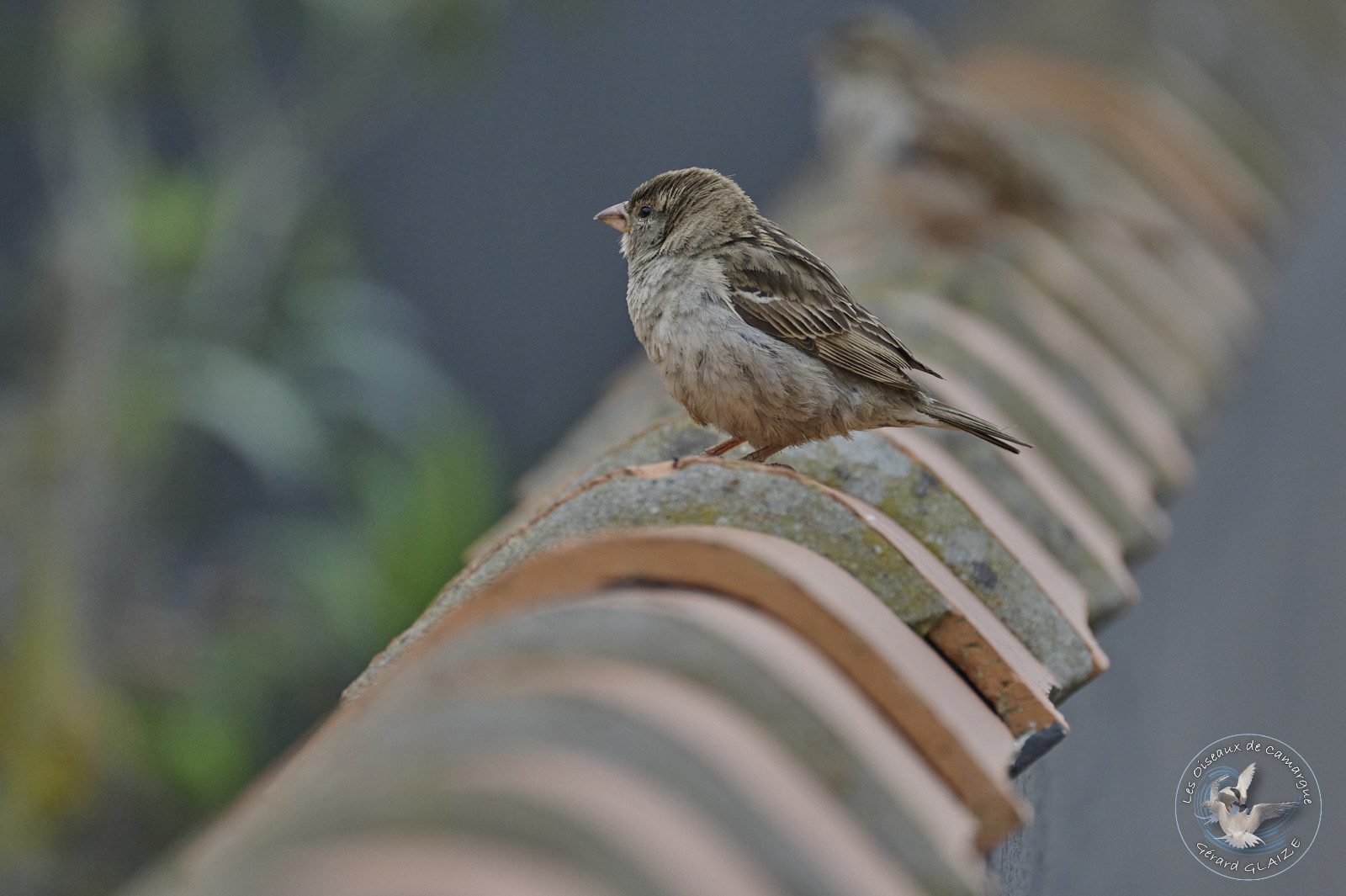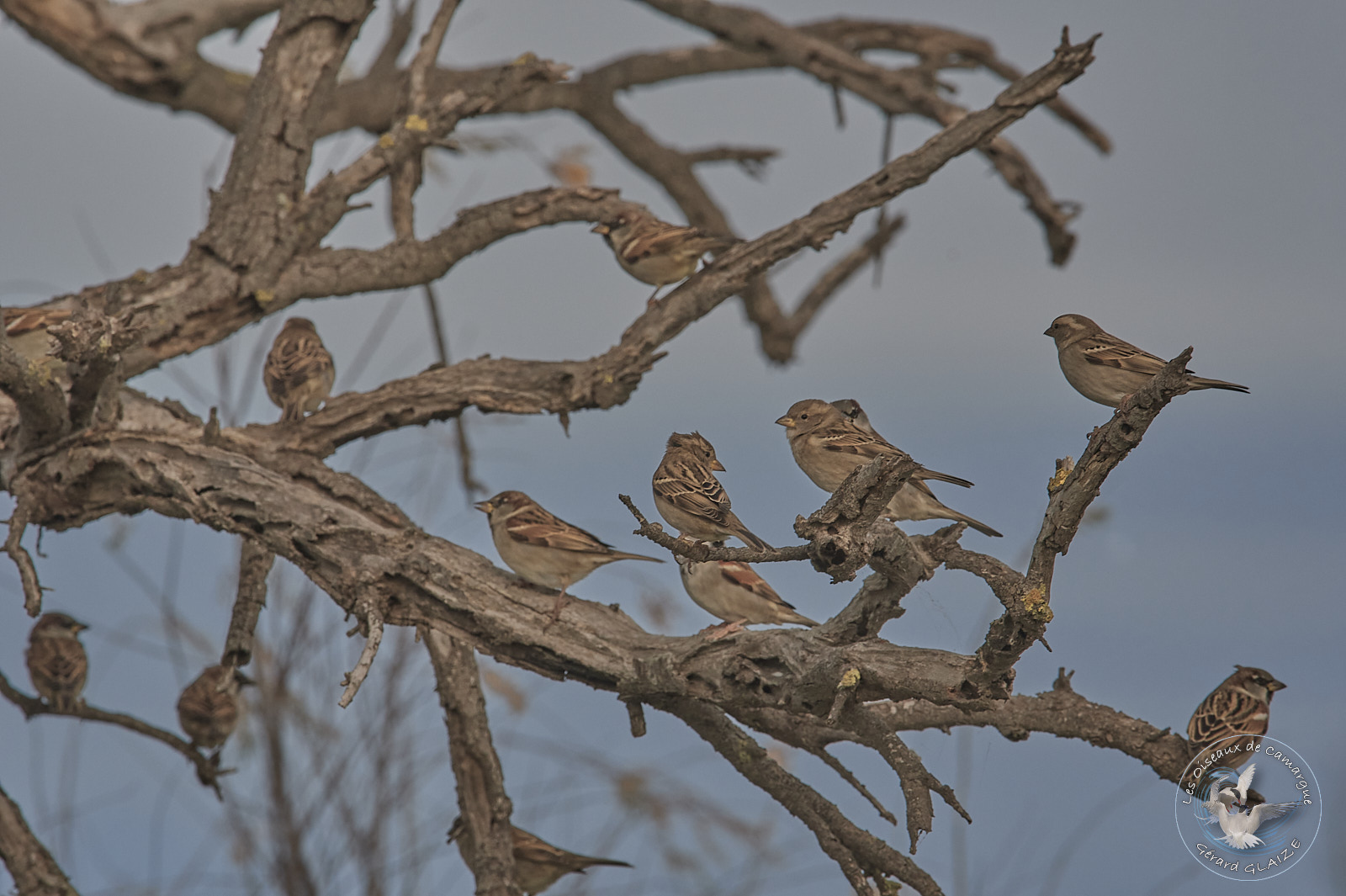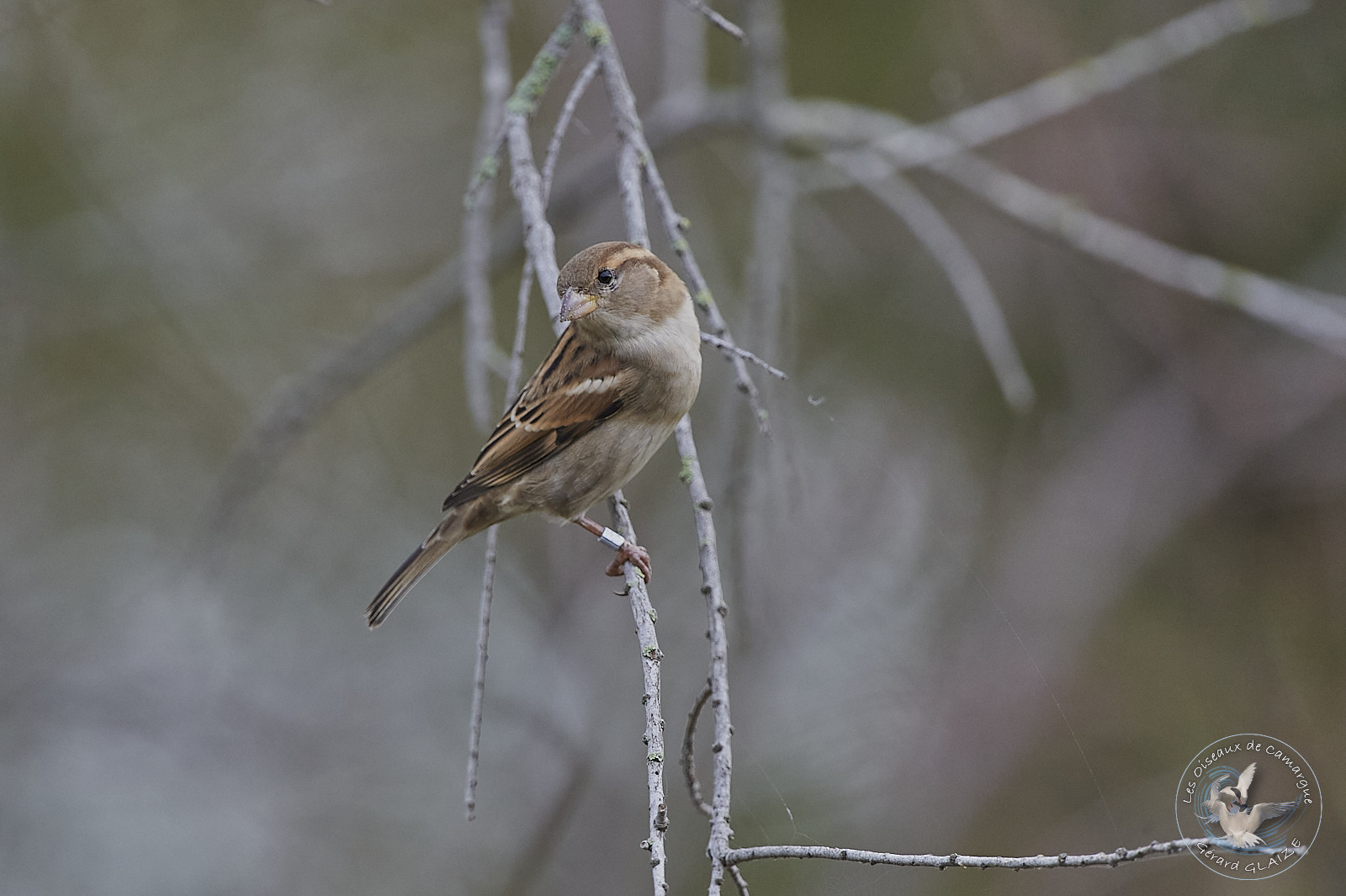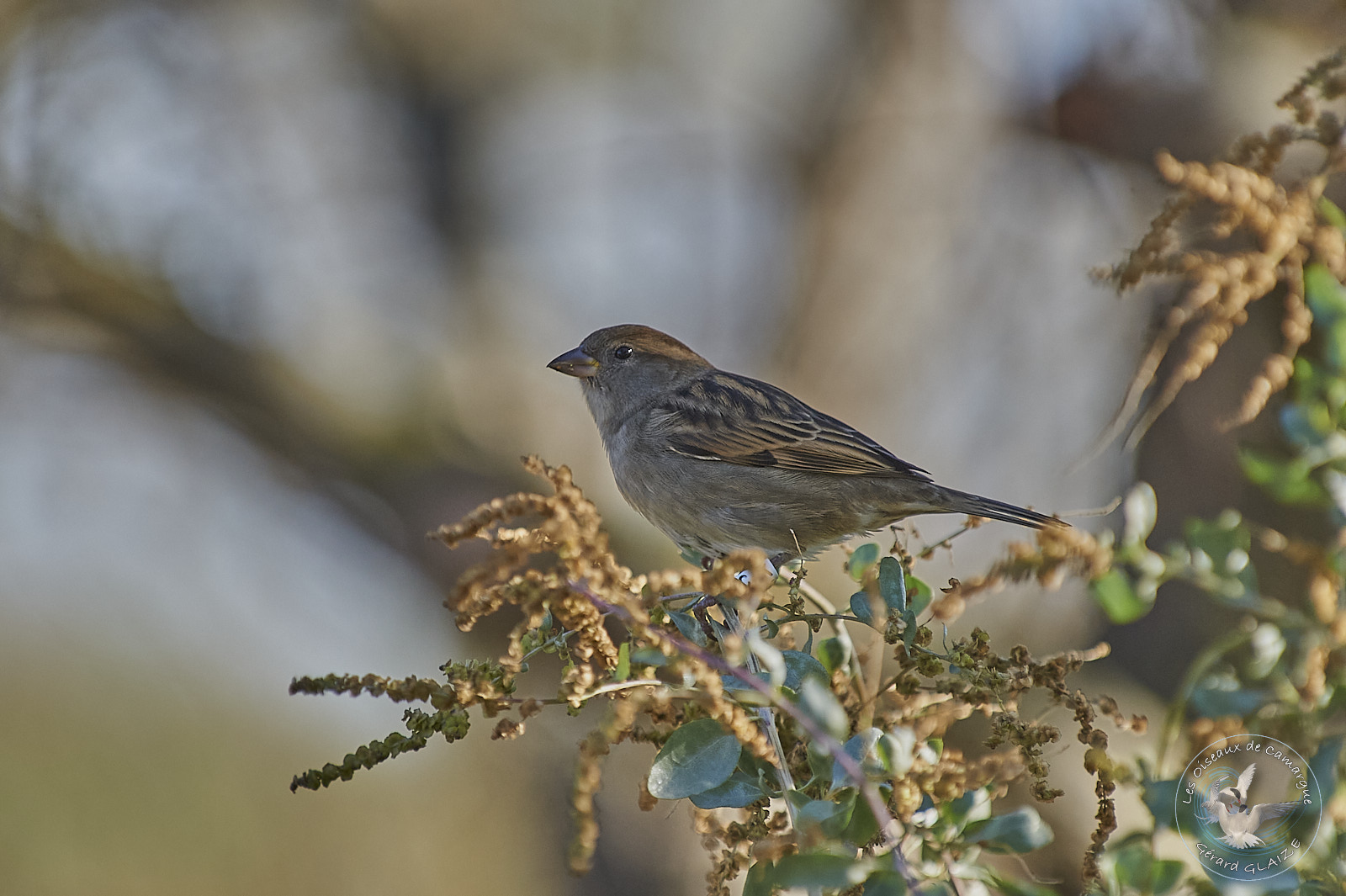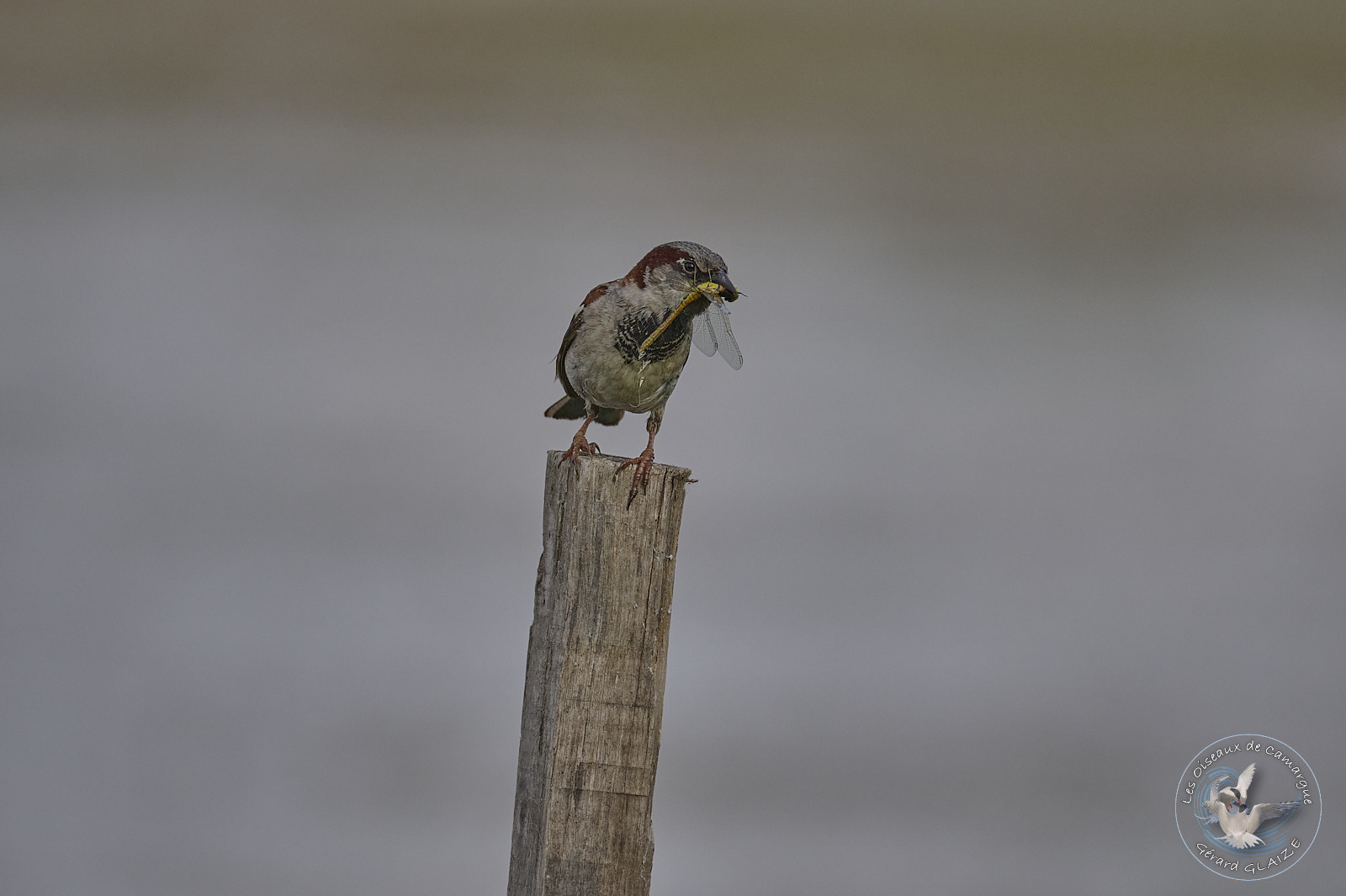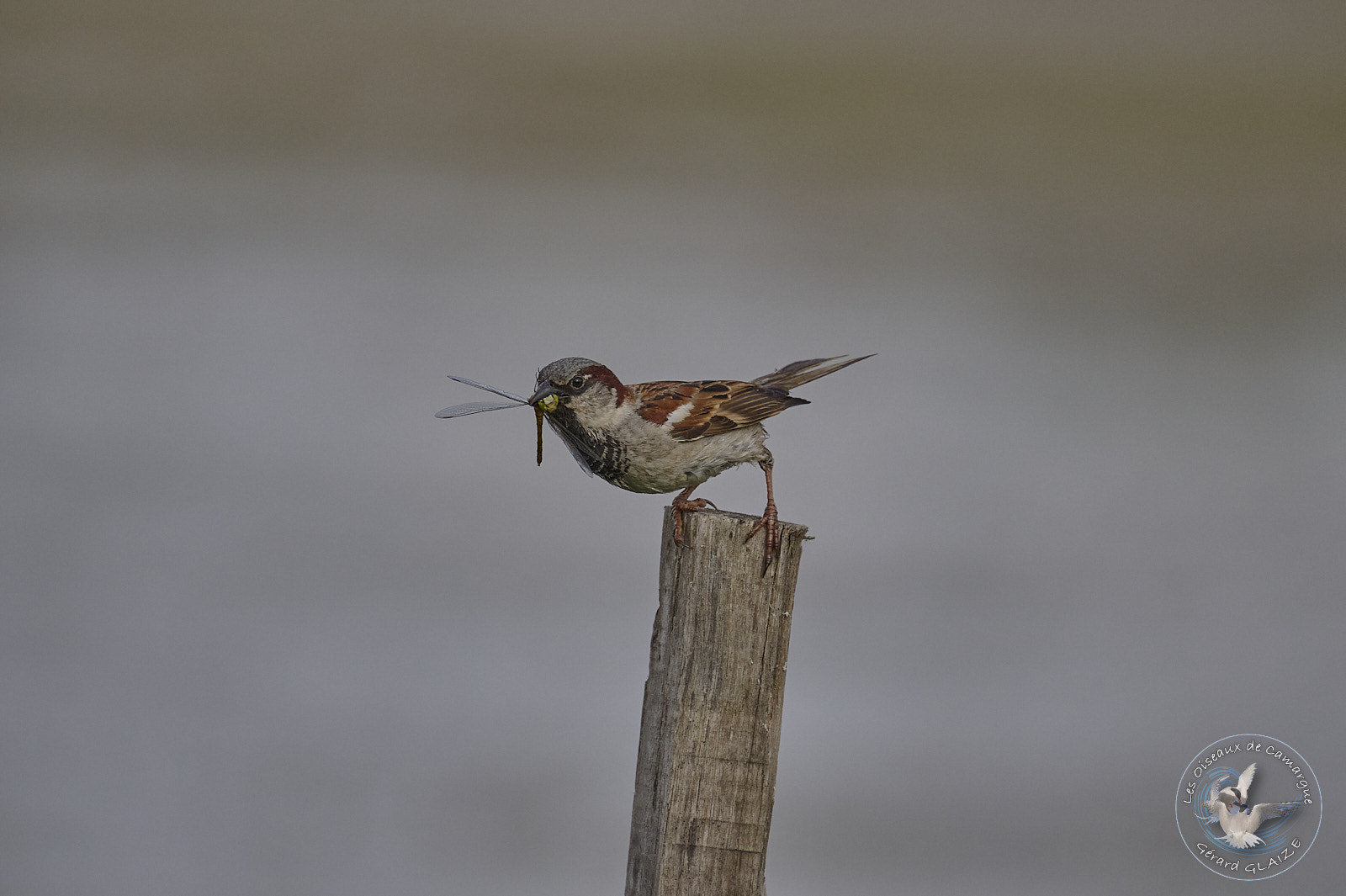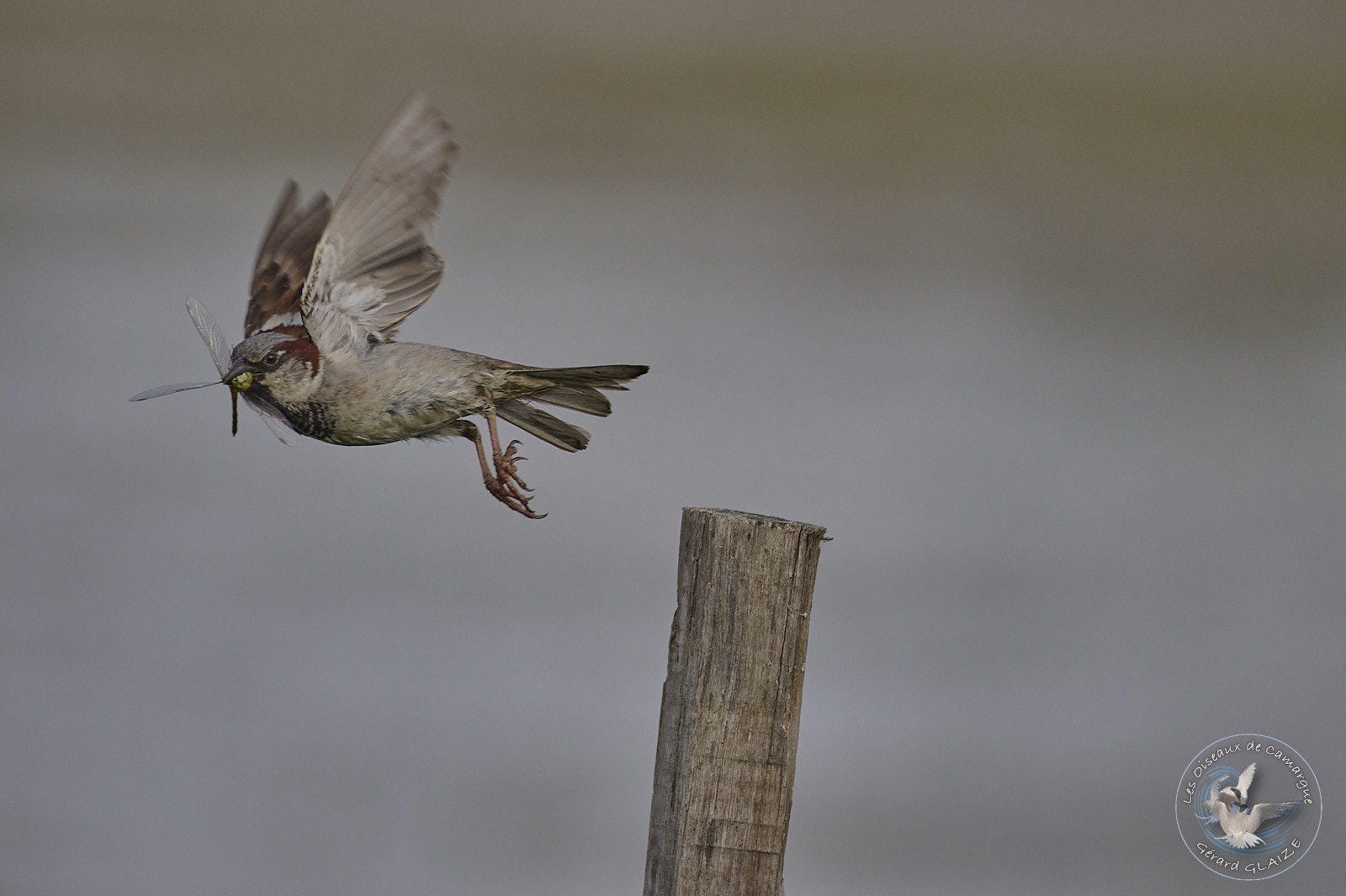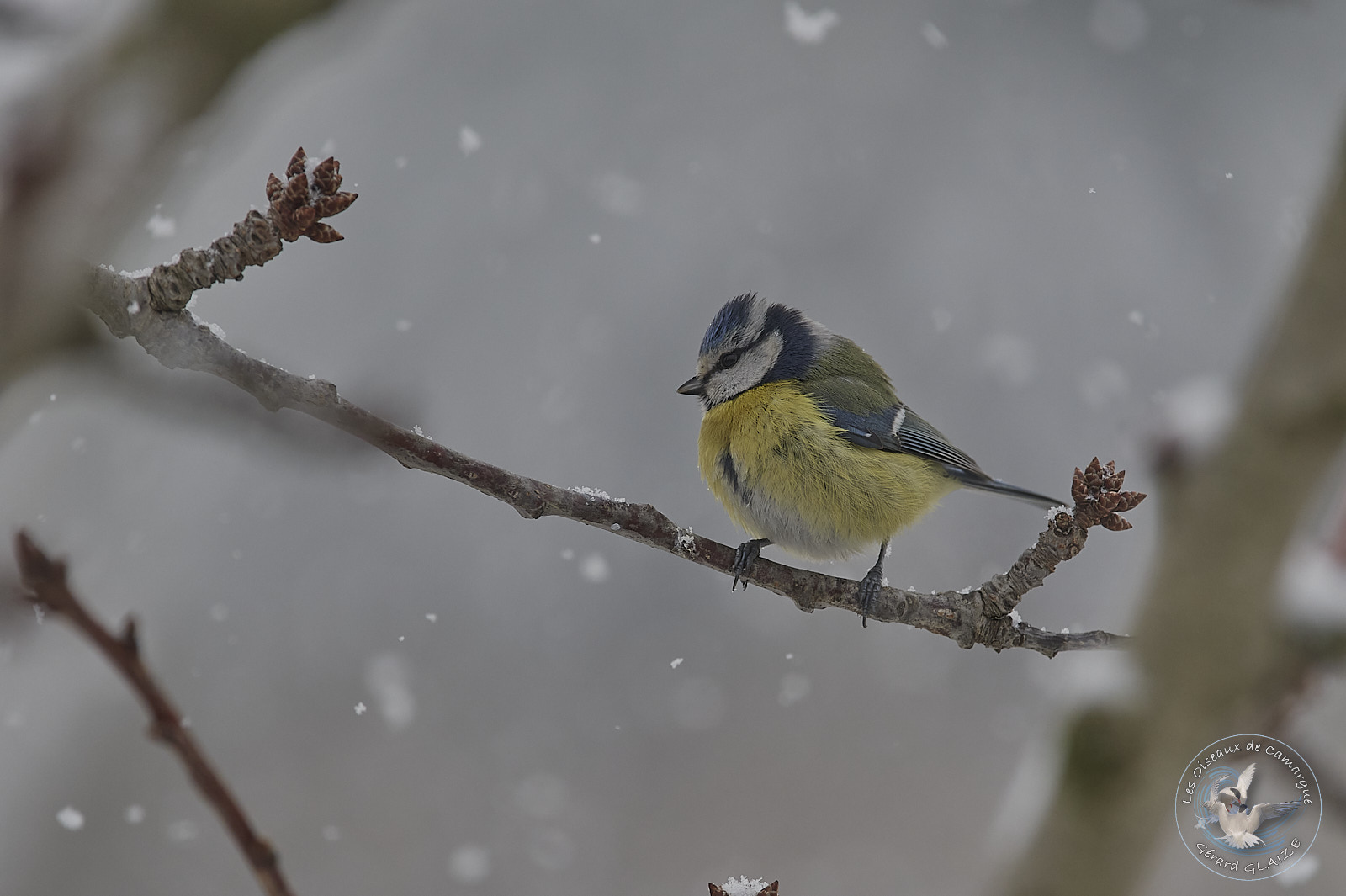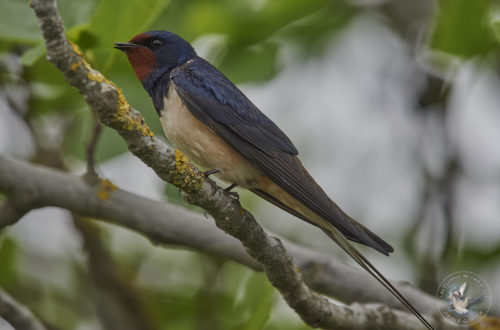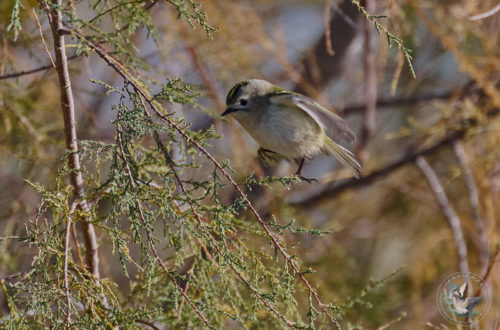House Sparrow
Last updated on November 15th, 2023 at 06:32 pm
Sparrows are birds of the Passeridae family, divided into several species, the most common of which is the house sparrow.
House Sparrow
Scientific name : Passer domesticus
Family : Passeridae
Long. 15 cm, Env. 25 cm
Weight : de 30 à 39 gr
Description
The adult male house sparrow has a brown back streaked with black. Scapulars are chestnut. Wings are brownish with white wing-bars. Rump is grey. Tail is dark grey-brown. The underparts are paler, with plain gray breast and belly. In breeding plumage, the male has a black bib. The head is dark, with grey, chestnut-edged crown extending down the hindneck. Cheeks and neck sides are white. A black band crosses the eyes, and joins the black bib. The conical bill is grey-black. The eyes are dark. Legs and feet are light brown. Apart from the breeding plumage, the male lacks a black bib and has duller plumage.
The female, however, does not have the chestnut and black colors of the male. She has greyish-brown crown, and buff-grey superciliary band. Upperparts and wings are grayer than in male. The abdomen is whitish. The beak and legs are light brown.
Eurasian Tree Sparrow is more fearful than its cousin the house sparrow. The tree sparrow is one of the widely distributed sparrow species in Europe and Asia. It is recognizable by its brown cap and the black comma-shaped patches on its cheeks. Males and females are similar. This species is cave dwelling.
Flight
The house sparrow has a powerful, rapid and direct flight. It can reach a speed of almost 60 kilometers per hour. Heartbeats are interrupted for brief moments. The wings are thus glued to the body. However, the flight does not become undulating as in the finches.
Habitat
The house sparrow lives practically everywhere where man is present and has built buildings, towns and villages, hamlets, isolated farms.
Regime – Diet
The house sparrow is omnivorous and opportunistic, feeding mainly on seeds, insects, larvae, earthworms and spiders, but also fruit buds, which makes it unpopular with gardeners and farmers.
Nesting
The house sparrow prefers to find shelter in a hole to establish its nest, but uses varied nesting sites; this one builds its nest in March, preferably in a cavity (crack, gutter, etc.), from straw, feathers, strands of textile. The female lays three to eight eggs. Both mates incubate the eggs for 14-17 days. These can make two or three broods from April to July.
Song
The house sparrow chirps. Its song is not very melodious, it is easier to remember its characteristic cry “tchip tchip” which earned it its slang name of piaf (in french).
Useful Links
Other Links
- You can see the article from my site “Birds of Camargue” for more information on the Camargue and the Birds.


